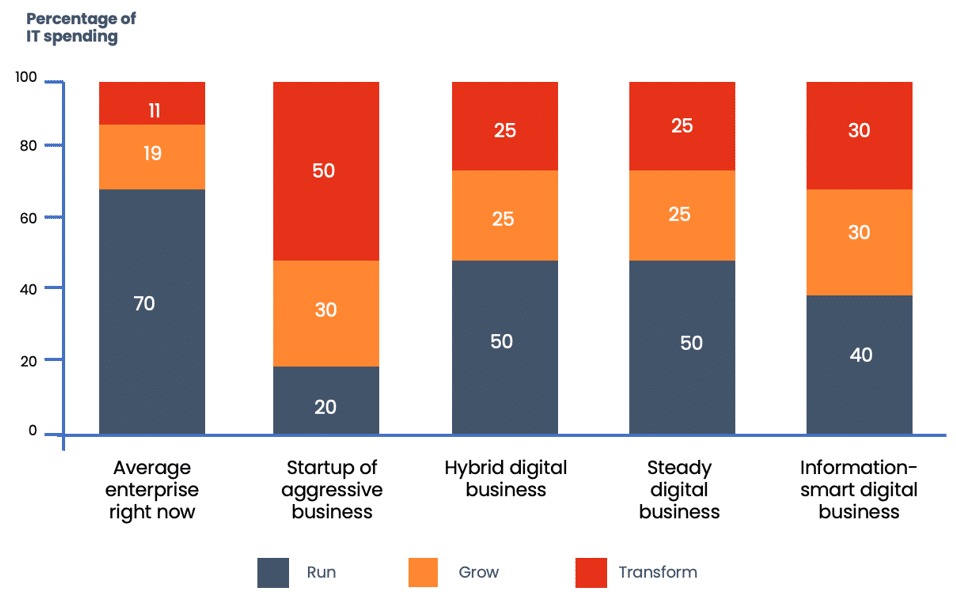
Senior Director Professional Services
Subscribe to the newsletter
We are in an era of rapid technological change, where advancements like cloud computing, AI and data analytics alongside ERP and CRM systems, such as Dynamics 365 Finance and Operations and Dynamics 365 Customer Engagement, are critical to enterprise success. Maintaining an edge in such competitive times requires more than just adopting advanced technologies; it demands agility, actionable insights, and a customer-responsive approach.
Managed services have become a key enabler of enterprise IT solutions, turning mission-critical applications into strategic assets that drive valuable business outcomes. This blog examines the evolution of Application Management Services (AMS) in response to increasing business demands and why rethinking the traditional AMS model is crucial for sustained success.
The importance of Application Management Services (AMS) in the present IT landscape
The increasing competitiveness in the market has led to more complex and diverse IT landscapes, making technology management costly. Currently, 65% of IT budgets are allocated to maintaining existing systems. To manage these costs effectively, organizations are creating specialized functions to oversee applications and infrastructure, which is driving growth in the Application Management Services (AMS) sector.
According to Gartner, the global enterprise application software market is expected to reach $387 billion in 2024, growing at a rate of 13.7% in constant currency. By 2028, the market will expand to $662 billion, with a compound annual growth rate (CAGR) of 13.6% from 2023 to 2028.
More insights: Explore the benefits of managed services and how they can enhance your business operations.
IT spending categories: Transform, Grow, and Run
Gartner categorizes enterprise IT budgets into three main areas: Transform (spending on new software projects), Grow (investing in enhancing and expanding existing IT systems), and Run (expenses for maintaining current IT systems).

As the image above shows, a significant portion of IT budgets is allocated to maintaining existing systems. During financial challenges, businesses tend to reduce their ‘Transform’ and ‘Grow’ spending but cutting the ‘Run’ budget could substantially risk major operational disruptions. To remain competitive and scale successfully, IT service companies must prioritize AMS, which is increasingly seen as a cornerstone of the Run category.
Optimizing IT spending while mitigating risks can be challenging. Partnering with a Managed Services Provider (MSP) for Application Management Services (AMS) allows enterprises to streamline their RUN budgets effectively. Outsourcing application management to industry experts not only ensures smooth and reliable operations but also frees up internal resources to focus on growth and innovation. Additionally, by examining how leading companies allocate their IT budgets, businesses can gain valuable insights and adjust their strategies—investing more in AMS to boost performance and drive long-term scalability.
It’s time to rethink traditional AMS for a lasting impact
Many IT service companies (small and large enterprise customers alike) see AMS as a natural extension of their work during their scale journey. However, simply adding AMS to a portfolio without evolving beyond the traditional model can limit its effectiveness. Most traditional AMS models focus on ticket lifecycles and maintaining service-level agreements (SLAs), which can lead to inefficiencies, employee dissatisfaction, and higher turnover.
To benefit clients and prospects, IT service providers with AMS expertise must move away from transactional support models and adopt a more proactive, outcome-driven approach. As Gartner research points out, neglecting AMS—especially during economic downturns—can hurt client retention and stifle growth. This is particularly true when businesses reduce their Transform and Grow budgets, making the Run category, where AMS fits, even more critical.
By rethinking AMS as an integral part of your offering, you can provide clients with continuous optimization, strategic insights, and enhanced operational efficiency. This modernized approach not only ensures you retain a competitive edge but also helps your clients thrive in today’s complex IT environments—creating a win-win scenario for both sides.
Make the right choice: Managed services vs staff augmentation explained
Evolving AMS: Moving beyond the transactional model
Let’s first understand what is Application Managment Services? Application Management Services or Application managed services (often used interchangeably) ensure your IT systems run efficiently, providing enhancements, optimizations, and upgrades. Application Managed Services providers, often third-party organizations, offer businesses – whether small or large – the necessary application support to keep critical software systems operational. By partnering with an AMS provider, companies gain access to specialized IT expertise without relying solely on internal resources to maintain and manage essential applications.
A reimagined AMS approach addresses the limitations of the traditional model by integrating several key components. We refer to this evolved strategy as “Disrupting AMS.” These components include:
- Proactive incident management: Anticipating and preventing issues before they arise.
- Alignment with business objectives: Ensuring IT support meets broader business goals.
- Knowledge retention: Safeguarding institutional knowledge accumulated through support teams.
- Continuous system monitoring: Using real-time telemetry to plan for future needs.
- System optimization: Regularly updating and improving systems to drive efficiency and cost savings.
These elements come together to create a Service Excellence Ecosystem, ensuring that the AMS offering consistently meets and exceeds customer expectations.
But what does a disrupted AMS model entail?
Delivering a high-performing AMS requires establishing a service excellence ecosystem built on six key pillars:
- People: Skilled teams that leverage proven standard operating procedures (SOPs).
- Tools: The right technologies to resolve service requests efficiently.
- KPIs: Metrics that define success and offer a frame of reference for performance.
- Insights: Continuous monitoring to identify areas for improvement.
- Proactive management: Preempting root causes of issues before they affect production.
- Holistic process view: Ensuring an end-to-end understanding of business processes.
We will explore these pillars in-depth in our upcoming blog series.
Summing up
No doubt, leveraging a modern AMS model is critical for maintaining and enhancing your enterprise IT systems. By adopting a reimagined approach, businesses can align their IT operations with long-term goals, ensuring efficiency, scalability, and proactive support. However, it all starts with choosing the right managed application service provider.
At Confiz, we specialize in delivering tailored Application Management Services that go beyond traditional support. With deep expertise in Data & AI, Cloud, and Microsoft Business Applications, we help organizations optimize their IT environments and drive sustainable growth. Whether it’s transforming your ERP systems or leveraging AI-driven insights, partner with Confiz as your managed service provider. We will help you ensure your business stays competitive and agile in a fast-paced market. Contact us at marketing@confiz.com to discover how we can help transform your journey and maximize the benefits of managed services.



